This from Steve Redick:
While looking through my dad’s scrapbook stuff I found this issue of Fire Engineering magazine with an excellent write up on the tragic Hubbard St fire. This incident has been well discussed over the years but I know this will be new to many of you. This is a great example of what a good fire magazine article should be.Steve
Click on any of the pages for a larger file.
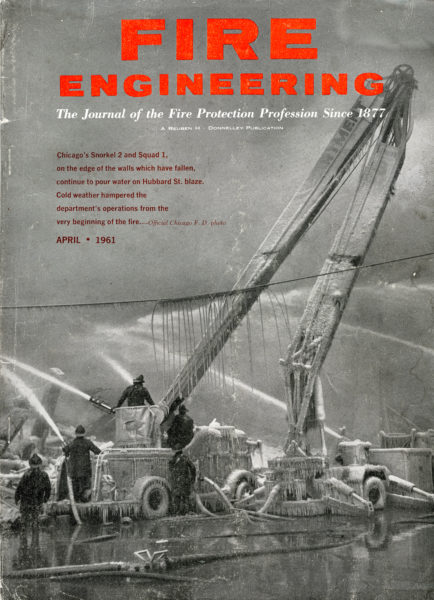
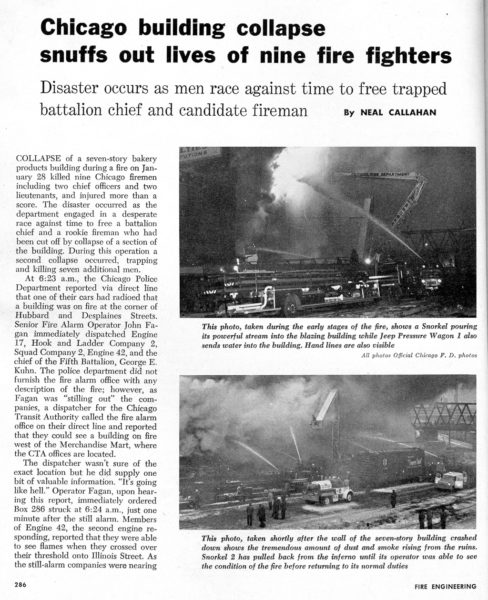

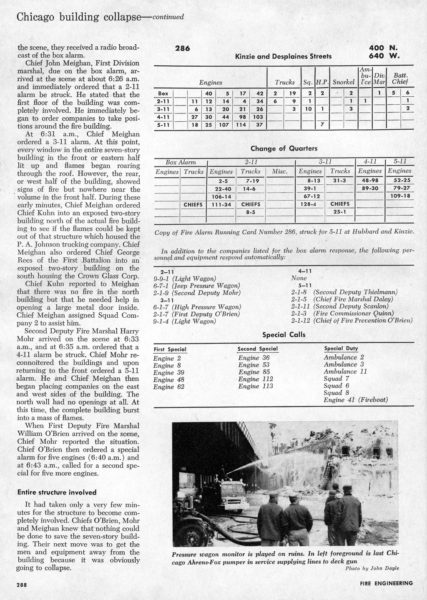
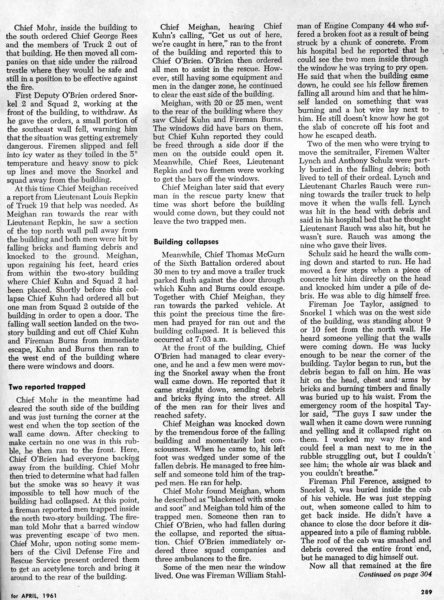
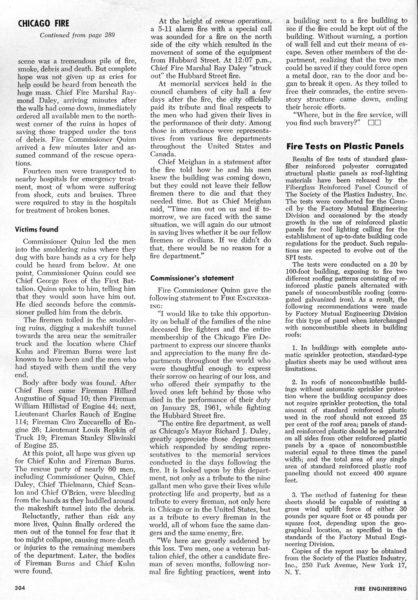






























#1 by David on August 23, 2016 - 9:09 AM
Bill, thanks a lot for your reply and all the details! Really quite a coincidence that the two Bulldogs were making their last shifts at the day (and the day after) this fire. Didn’t even know that these rigs were still in service by 1961.
Also never knew the light wagons carried power saws, thought it was only a squad (or later truck) stuff. Looks like the 9-9-1 may be either a typo or some CD or similar auxiliary apparatus, hard to tell…
#2 by Bill Post on August 22, 2016 - 10:09 PM
David 9-1-4 or Light Wagon 4 wasn’t assigned one of the 3 1957 International Harvester’s but was assigned a 1919 model Mack/Bulldog Light Wagon. Light Wagon 5 also was running with a 1919 Mack Bulldog light wagon. By coincidence January 28, the day of the fire, was the last day that Light Wagon 4 was in service and Light Wagon 5 was taken out of service on the following day. During the fall of 1957 the Chicago Fire Department had put Light Wagons 4 and 5 in service. Light Wagon 4 was put in service September 7th at Engine 95’s quarters and Light Wagon 5 went in service on December 11th at Engine 65’s quarters.
The newer International Harvester light wagons were assigned to Light Wagons 1, 2, and 3. At the time of the fire, Light Wagon 1 was with Engine 5 which was only about a mile south of the Hubbard Street fire. Light Wagon 2 was at Engine 57’s old quarters at 2412 W Haddon, and Light Wagon 3 was at Engine 84’s old quarters at 5721 S Halsted.
So that was the last day that 9-1-4 was in service as a full-size light wagon. On May 4, 1962, 9-1-4 would go back in service on a cab over engine Jeep using a Willy’s Jeep chassis. This was similar to the cab of Jeep Pressure 1 in Special Services at 1044 N Orleans which become Snorkel Squad 1’s first station on October 1, 1962.
I really don’t know about Light Wagon 9-9-1.
As previously mentioned, Snorkel Squad 1 wasn’t in service yet. While the conventional squad companies at the time carried acetylene cutting torches, port-a-power jacks, and hand saws, they didn’t carry power saws. The light wagons and some of the Civil Defense rescue units had some chain saws. The power saws on the light wagons probably ran off of the power generators.
That was another reason for the creation of the Snorkel Squads. The CFD needed some units with up to date power tools and other state of the art equipment.
#3 by Mike Mc on August 22, 2016 - 4:25 PM
Thanks for posting Steve. Again Bill, excellent historical summary.
A few quick notes: 1. 14 of the engine companies eventually went out of service and two moved to the “boondocks”. 2. That is the fire museum’s Engine 10 pumping at the ruins. 3. Chief Robert O’Brien (2-1-12) had a little over a year to live before he was killed in a collapse on 2/14/62 with BC Hoff.
#4 by David on August 22, 2016 - 4:12 PM
Just wondering, the 9-1-4 lightwagon would be probably the ’57 IHC, but never heard about the 9-9-1, anybody knows what kinda rig that was, was it a Civil Defense or CFD apparatus?
#5 by Bill Post on August 21, 2016 - 4:34 PM
Thanks for sharing that excellent article with us Steve. You are absolutely correct that about that being an example of what a good article should be.
Just about every significant detail wasn’t left out which includes the running card of the box and even the additional companies that were due on that fire. One of the unique things of that particular running card is that it was specifically put together for a high hazard area. The thing that really indicated it was a very high hazard area is that five and not four engines were due on all the subsequent alarms after the still and box response. Five engine alarms really weren’t that uncommon during the 1950’s through early 60’s, however in those years the five engine responses usually would start around the 4-11 and 5-11 alarms. On this particular card it began at the 2-11 alarm.
It is also interesting to note that the 5th engine due on the 5-11 is Engine 37, a fireboat.
Another interesting thing about the running card is that it was put together during a major historical transition which was about to take place in the CFD. The high pressure wagons were still in service and many of the engine companies that would be taken out of service within a few years are still in service and even some of the companies that are still in service were still located at their old or original quarters.
Engine 17 was only a short walk from the scene of the fire. Truck 19 was still located at 1129 W Chicago, however it was in their old station which was a single bay house. Engine 14 and High Pressure 2, while nearby, were still located on Chicago Avenue just east of Larrabee Street in their original quarters. Engine 4 was already in their current quarters on Division, however Engine 27 and Jeep Pressure 1 were also located with them. Truck 10 wasn’t relocated there for another three years. Engine 40 and Truck 6 were both still in service at their quarters on Franklin St between Randolph and Washington where the AT&T building is now.
Engine 34 and Squad 2 were still at their old quarters at Aberdeen and Washington. There were three Snorkels but Snorkel Squad 1 wasn’t in service yet.
That was just from a historical perspective but the diagram and description of exactly what happened is what made it an excellent article.